- Home
- Equipment Reviews
-
Amplification Digital Integrated Mono Block Preamplifier Phono Solid State Tube Analog Sources Cartridges Tape Tone Arms Turn Tables Digital Sources Digital Disc Players DACs Music Servers Streaming Music Services
-
Accessories Power Conditioners Room Accoustics Racks & Stands Audio Software Other iPod iPod Speakers iPod Headphones iPod Transports Headphones Over Ear On Ear In Ear Headphone Amplifier
-
- Audio News
- Event Reports
- California Audio Show, San Francisco
- Consumer Electronics Show
- T.H.E. Show
- Rocky Mountain Audio Fest
- AXPONA
- Salon Son & Image
- Hi-Fi Show & AV Expo
- High End
- Lone Star Audio Fest
- Capital Audio Fest
- TAVES - Toronto Audio Video Entertainment Show
- AK Fest
- Home Entertainment Show
- New York Audio $ AV Show
- Open House Events
- Spotlight
- Music
- The Columns
- 2024 California Audio Show
Latest Reviews & Audio News
-

PS Audio AirLens and DirectStream DAC Mk2 Review
(July 26, 2024) -

Audio Note UK Meishu Tonmeister 300B integrated amplifier, P3 Tonmeister stereo amplifier, M6 Phono Balanced Preamp Review
(July 12, 2024) -

Douglas Schroeder’s One Year Exploration of Digital Front End Systems
(June 25, 2024) -

Arya Audio Labs RevOpods Anti-Vibration Feet Review
(June 25, 2024) -

Lego Icons Retro Radio Review
(June 14, 2024) -
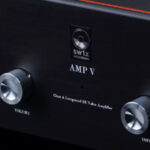
SW1X Audio Design AMP V “Titan” Special directly-heated triode integrated amplifier Review
(June 14, 2024) -
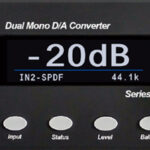
Bricasti Design Model 1 Series II D/A Converter and M5 Network Player Review
(May 24, 2024) -

Star Wars – The Empire Strikes Back – In Concert, May 2, 2024
(May 20, 2024) -
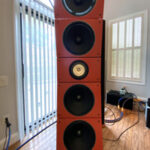
PureAudioProject Quintet15 with Voxativ AC-X field-coil open-baffle loudspeaker system Review
(May 20, 2024) -
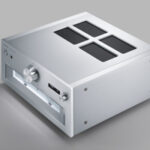
Technics SU-R1000 reference stereo integrated amplifier Review
(May 20, 2024) -
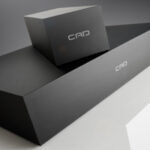
Computer Audio Design GC 1.1 & GC3.1 Ground Control external grounding systems Review
(May 20, 2024) -

Andy Grove of Audio Note UK on IO LTD
(March 23, 2024) -
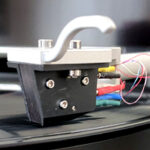
Audio Note UK IO Limited field-coil cartridge system Review
(May 20, 2024) -
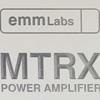
EMM Labs MTRX monoblock Input Board Upgrade Review
(March 7, 2024) -

May 2018 Sibelius Violin Concerto concert video via Berliner Philharmoniker Digital Concert Hall app
(February 16, 2024)
-
Categories
-
Amplification Digital Integrated Mono Block Preamplifier Phono Solid State Tube Analog Sources Cartridges Tape Tone Arms Turn Tables Digital Sources Digital Disc Players DACs Music Servers Streaming Music Services
-
Accessories Power Conditioners Room Accoustics Racks & Stands Audio Software Other iPod iPod Speakers iPod Headphones iPod Transports Headphones Over Ear On Ear In Ear Headphone Amplifier
Site Sections
Copyright ©1996-2024 All Rights Reserved.
Popups Powered By : XYZScripts.com

So long to my old friend.
The old friend is the XLH REF-1812 horn loudspeaker system I reviewed last year. Its owner, Mr. Ping Gong, of www.aaa-audio.com/, American distributor of XLH and Dussun audio products, generously allowed me the loan of this system for an extended period. This one-of-a-kind speaker system has been my reference for numerous reviews of other components for many months, providing me with a unique window on their sound. I’ll be relocating soon so these 350lb. reference speakers with their 4 crates had to be shipped out last week.
Ping defines the word ‘affable’, and, although we only spent one day together, I consider him my good friend. I further hope to see more creations of Hou JianZhong, designer of the 1812 who is possessed of a truly wonderful ear. The crossover that melds the 4 drivers of the 1812 is simply outstanding. Anyone can put speakers in boxes. The true art of speaker design is in the crossover.
Aside from my own opinion, numerous exhibitors at the 2006 C.E.S. agreed that the 1812 was among the finest speaker systems they heard at that show and several have made the journey to 70 Miles from Nowhere to hear their own creations with it. Hopefully, Mr. Hou, proprietor of the No. 1 Pro Sound dealer in China will be encouraged by the reception the 1812 received to follow on with more speaker systems for the U.S. market.
So what does a high-efficiency, horn aficionado with a do-it-yourself bent replace the 1812 with? Obviously, another such system. For that, I turned to the designs of another friend, Wayne Parham of Pi Speakers. I already had on hand from a previous project a pair of 4 cubic-foot boxes with JBL 2226J mid-woofers. These well-known (among DIY speaker enthusiasts) drivers not only reach most of the bass depth of the larger 2241s in the 1812 but also possess a wonderful mid-range that extends to above 1600 Hertz. At that point, the PiAlign theory calls for an 18 decibel-per-octave slope (3rd order Butterworth) filter for a horn tweeter accompanied by an attenuation network custom designed to the efficiency of the horn driver used.
I have a pair of Bill Martinelli’s superbly crafted Woodhorns, but the compression driver cupboard was bare. Although I have fallen in love with the JBL 2446 compression driver of the 1812 system, they are 2” exit drivers whereas the Woodhorns have an 1” throat. They’re also terribly expensive. So, based upon the specifications and a curiosity of what the Italians could do, I ordered a pair of B&C DE200 1” drivers with titanium diaphragms. These arrived yesterday. I may be 70 Miles from Nowhere, but just a one-day delivery from Parts Express!
So I went from this:
To This:
A little crude, you say?
Well, with the Pi crossover that attenuates the 106 decibels efficient B&C driver to match the 97 decibel efficiency of the JBL 2226 and the special audiophile-approved pillow, I have natural, clear sound which is an approximation of that heard from the 1812’s. Maybe 50%. When you part with a world-class speaker on Wednesday and have decent sound on Friday, that’s a pretty good reason to DIY, n’est ce pas?
It also drives home my previous point about the importance of crossovers. Anybody can stick a driver on top of a pillow………
That tall tube amplifier peeking out from behind the box doesn’t hurt, either. It’s one half of a pair of Red Rock Audio Renaissance mono-blocks, subject of an upcoming review.
I’m really missing the 1812’s but their absence gives me motivation to get out the tools and finish a project that’s languished for quite awhile, a pair of Great Plains Audio Altec 704 co-axial horns in a box designed by my friend Speakerman along with a proper home for the JBL 2226/B&C DE200 combination. Stay tuned.